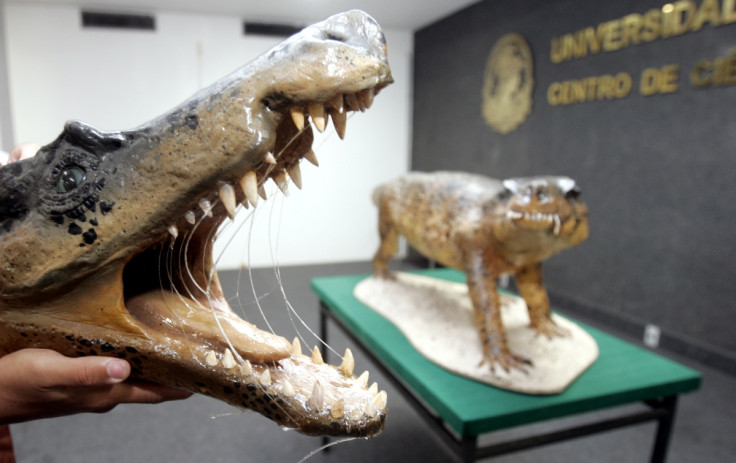Flying Dinosaur Footprint Found in India's Jaisalmer: They Were 'Short, Looked Like Ostrich'

An international team of scientists has discovered the footprints of the flying dinosaur, Pterosaurs, fossilised on basal rocks in India's Rajasthan state.
The latest evidence of the presence of flying dinosaurs was found in Thaiat village in Jaisalmer district of the western Indian state, according to The Times of India.
"The new discovery by geological scientists have found fossils of two separate 160 million years old flying dinosaur [in] the area adjoining Kutch basin. This basin is known for its special geological conditions. These dinosaurs were short heighted and looked like ostrich," said Professor Dhirandra Kumar Pandey of the University of Rajasthan.
The first footprint of flying dinosaurs was only 5cm long, belonging to a species known as Grallator which was no bigger in size than a hen.
The second footprint was big and three-toed, about 30 cm long, left by Eurontes Giganteus, which grew to about 6-7 meters, according to Professor Grzegorz Pienkowski from the Polish Geological Institute in Warsaw, one of the scientists who made the finding.
Bone fragments of the flying dinosaur were already recovered in the adjoining areas, said Pandey.
Scientists had also found numerous bone fragments of different species of dinosaurs in the region, which is distinguished by its special geological conditions.
Eurontes Giganteus, growing to about 6-7 meters, was longer than the biggest known recent crocodile, Pandey told the TNN. "It was not only longer, but much more dangerous and agile than crocodile, running fast on its two legs, grasping a prey with strong-clawed forelimbs and terrifying jaws, armed with sharp teeth. These teeth were some three times longer than teeth of the Indian tiger", he added.
"Now scientists from all over the world in nearby areas of Jaisalmer & Kachh reason will conduct research on the origin and destruction of dinosaur in the Jurassic period at Mesozoic era and will try to solve the unsolved questions."
Eurontes Giganteus was probably more dangerous and agile than the biggest known recent crocodile, Pienkowski said. It ran fast on its two legs, grasping prey with strong-clawed forelimbs and also with the help of sharp teeth, which were three times longer than those of an Indian tiger.
Experts estimate that about 180 million years ago the area was a coastal zone with an encroaching Jurassic sea bringing soft sedimentary rocks in cycles, which had passed from non-marine to marine environments and then again deposited on the shore.
Geological observation of the basin by the international team of scientists unravelled the ancient environments in which these rocks were deposited.
The isolated stretch of Jodhpur highway is found to be rich in an outcrop of Jurassic rocks, which is expected to attract many geologists and palaeontologists from all over the world to study the mysteries of Jurassic locked in this wasteland.
"Now scientists from all over the world in nearby areas of Jaisalmer & Kachh reason will conduct research on the origin and destruction of dinosaur in the Jurassic period at Mesozoic era and will try to solve the unsolved questions", said Pandey.
The latest finding was discussed at the 9<sup>th International Congress on the Jurassic System, hosted by the University of Rajasthan.
Scientists from 32 countries including Denmark, France, Germany, Poland, Russia, Slovakia and UK carried out a research excursion in the Jaisalmer Basin as part of the Congress.
© Copyright IBTimes 2025. All rights reserved.
















